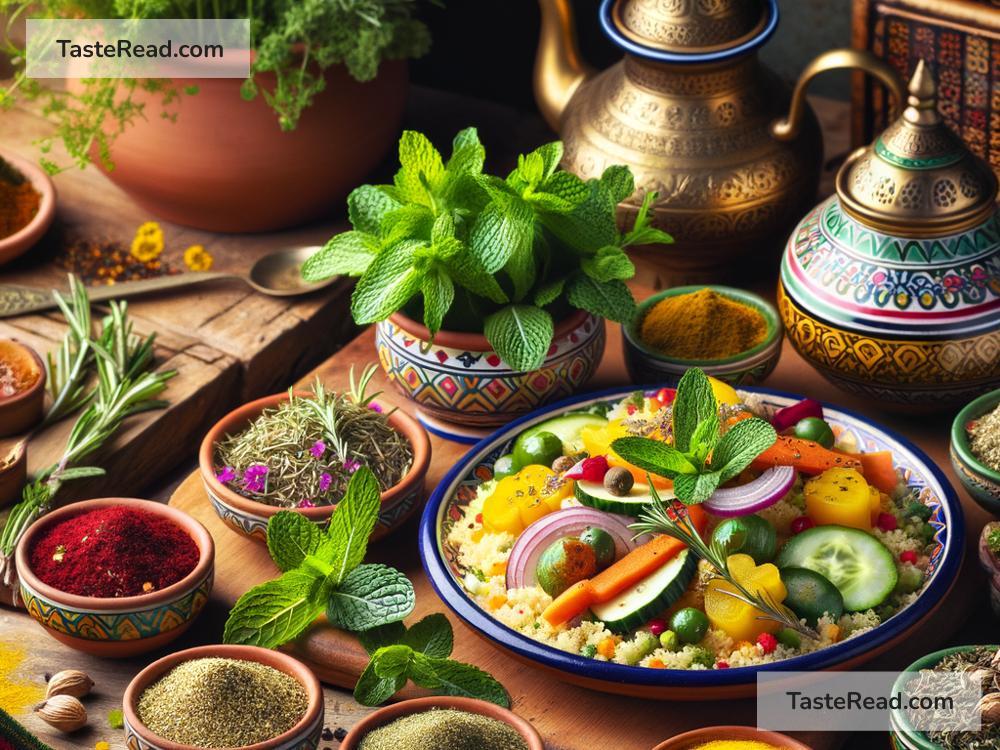Exploring the Lush Herbal Infusions in Mid-Summer Moroccan Cooking
Moroccan cooking is a magical blend of flavors, spices, and ingredients. When it’s mid-summer in Morocco, fresh herbs play a starring role in the kitchen. Herbs are not just a garnish or a simple addition to dishes in Moroccan cuisine—they’re an essential part of creating bold, refreshing flavors. In this article, we’ll take a closer look at the lush herbal infusions used in mid-summer Moroccan cooking and how they bring life and character to the food.
A Celebration of Herbs
Morocco is known for its rich culinary history. The country’s diverse landscape offers plenty of fresh herbs, which are widely used in cooking, tea, and even medicine. Mid-summer in Morocco is the perfect time for exploring these herbs because the warm weather enhances their aroma and taste. Some of the most popular herbs used in Moroccan cooking include mint, cilantro, parsley, thyme, oregano, and saffron.
Fresh herbs are prized for their ability to add brightness to dishes and balance out the richness of spices. They’re often added at different stages of cooking—sometimes early on to infuse flavor, and other times at the end to preserve their vibrant taste and aroma.
Mint: A Summer Staple
Mint is arguably the most beloved herb in Moroccan cuisine, especially during the summer months. It’s fresh, cool, and revitalizing, making it perfect for the hot weather. Mint is used to flavor everything from teas to salads and even cooked dishes.
One of the most iconic ways mint is used in Moroccan culture is in traditional Moroccan mint tea, also known as “atay b’naanaa.” This tea is made with green tea, fresh mint leaves, and sugar, and it’s served in beautifully designed glass cups. Mint tea is not just a drink—it’s a social ritual and a symbol of hospitality. Families invite guests to sit down and enjoy the sweet, fragrant tea, paired with a refreshing summer breeze.
Mint also adds a burst of flavor to mid-summer salads or cooling yogurt dips. When paired with citrus fruits or cucumbers, mint creates a hydrating and tangy combination that’s perfect for sizzling summer days.
Cilantro and Parsley: A Dynamic Duo
Cilantro and parsley are two of the most widely used herbs in Moroccan cooking. These herbs are often used together to create depth and complexity in dishes. Cilantro has a bold, citrus-like flavor that pairs perfectly with fresh summer vegetables, while parsley has a softer, earthy taste that complements heartier ingredients.
Herb-infused marinades featuring cilantro and parsley are commonly used to season chicken or fish before grilling. Whether you’re making Chermoula (Moroccan marinade) or bright dipping sauces, these herbs help bring Moroccan charm to every bite.
Traditional dishes like Moroccan zucchini salad or Taktouka (a cooked salad with peppers and tomatoes) showcase cilantro and parsley’s ability to elevate simple ingredients into flavorful creations. Using fresh herbs makes these dishes taste fresher and lighter, which is ideal for summer meals.
Thyme and Oregano: Aromatic Powerhouses
Thyme and oregano are two herbs that lend a warm, aromatic touch to Moroccan cuisine. These herbs are especially popular in tagines, one of Morocco’s most famous dishes. Cooking in a tagine—a clay pot with a conical lid—locks in moisture, meaning the herbs’ flavors are steamed into the food.
In mid-summer, thyme and oregano are often paired with summer vegetables, such as eggplant, zucchini, or tomatoes, creating dishes that are rustic and hearty yet light enough for warm-weather dining. Add a drizzle of olive oil and a sprinkle of salt, and the plate is ready to shine.
Saffron: The Golden Herb
Saffron, though technically a spice derived from crocus flowers, is so precious and flavorful that it gets an honorary spot in the herbal lineup. Known as “Morocco’s gold,” saffron adds a distinctive floral aroma and a golden hue to dishes. In summer, saffron is often used in light broths, tagines, and rice dishes to enhance the rich flavors of fresh ingredients.
Since saffron is so powerful, just a few threads can transform a dish into something extraordinary. It pairs beautifully with herbs like cilantro and parsley, creating a layered harmony of tastes.
Herbs in Every Meal
Moroccan cuisine revolves around harmony, creativity, and balance, and fresh herbs are essential in achieving this. Whether it’s breakfast, lunch, or dinner, herbs play a central role. For example, breakfast might include savory herb-infused eggs, while lunch often involves an assortment of salads bursting with fresh parsley, cilantro, and mint. Dinner might feature a hearty tagine with thyme and oregano carrying the flavors.
Even desserts can benefit from herbs. Mint sprigs are often used to decorate sweet treats, while orange blossom water—another herbal essence—is used to flavor cookies and pastries.
The Essence of Mid-Summer Moroccan Cooking
Mid-summer Moroccan cooking is all about connecting with nature’s bounty—especially fresh herbs. These herbs invite cooks and diners to savor the season, with flavors that are both invigorating and grounding. They serve as a reminder that food can be simple yet extraordinary when we embrace fresh, seasonal ingredients.
By incorporating Moroccan herbs into your own recipes, you can capture the essence of this vibrant cuisine and enjoy a taste of Morocco, no matter where you are. So go ahead—try experimenting with mint, cilantro, parsley, or even saffron in your next meal. The beauty of Moroccan cooking is that there’s always room to explore!


